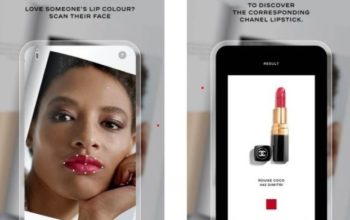Wine & Wellness-
You don’t need to fear a wine-stained smile, if you follow a few simple rules, and wine can even fight cavity-inducing bacteria.
The following written content by Lexi Williams

If you’ve ever been to a wine tasting, you’ve seen the dreaded effects that red wine can have on your teeth. But in addition to giving you a temporary purple grin, what other impact does wine—red, white and rosé—have on teeth, and what can you do about it?
Wine Spectator rounded up recent research and spoke with experts in the field to find out what wine lovers should know about their dental health.
Wine and Tooth Enamel
“Our teeth are like apples: They have a thin enamel shell, a thick dentin core, and then, like the seeds of an apple, you have the pulp of the tooth,” Dr. Ruchi Sahota, a cosmetic and family dentist based in the San Francisco Bay Area, explained to Wine Spectator. “It’s that enamel—that outer shell of the tooth—that is most affected by wine.”
According to Sahota, although enamel is the hardest tissue in the body, it is extremely susceptible to erosion caused by acids, a primary component in all wines. “Once you have that erosion, the inside of the tooth is exposed, and that is more susceptible than the hard enamel,” she said. “The more you wear away and get into that inner core of the tooth, the more susceptible you are to cavities.”
But Sahota doesn’t think that those who drink wine are necessarily more at risk for dental problems than those who don’t imbibe. Rather, there are simply special considerations that wine drinkers should keep in mind when thinking about their overall dental health.
The most immediate concern when it comes to wine and teeth, of course, is staining. Wine-mouth can inspire some embarrassment in the short term. It can also lead to dull or discolored teeth in the long term.
Red wine tends to get all the blame for this because it contains a large amount of chromogens. Also found in coffee and tea, which can also stain teeth, as well as berries, chromogens are pigment-producing substances that bind to the teeth and cause staining. Tannins, another key component of red wine, aid in this binding effect.
But it’s not just chromogens and tannins—or even just red wine, for that matter—that’s giving you a tinted grin; white wine shares an equal (if not larger) amount of the blame.
The same acid in wine that can break down your enamel and make teeth more susceptible to decay is also in large part responsible for promoting staining. So while it doesn’t contain the pigment that reds do, white wine’s typically-higher-than-red’s acidity can break down the enamel and leave your teeth more vulnerable to other, more pigmented food and drink. That’s why your teeth might seem especially stained when you go from white wine to red in one evening—you’ve essentially primed your teeth for staining with the acidic white wine, and then coated it with the highly pigmented red.
Protecting Your Teeth
Wine’s impact on teeth might sound a little scary at first, but wine lovers shouldn’t worry about their dentists telling them to stop drinking altogether.
“If I did that, I would probably lose most of my patients!” joked Dr. John Aylmer, a dentist based in Weston, Fla. “If a patient tells me they drink a lot of wine, it doesn’t raise any great concerns for me, as long as they’re sticking to an effective oral-hygiene regimen.”
This is as simple as practicing the basic dental hygiene habits you learned as a kid, such as brushing your teeth twice daily, flossing every day, eating a balanced diet and seeing your dentist regularly. “It’s the same thing with sugar,” Aylmer said. “We don’t tell patients to stop eating sugar; we just teach them how to take care of their teeth.”
But even though these prevention practices should keep the more serious concern of decay at bay, frequent wine drinkers still might end up with a case of magenta-tinged teeth after drinking. While your instinct might be to scrub away at your teeth the moment you catch sight of these unsightly stains, experts actually recommend you brush before drinking (to minimize the amount of plaque that wine can stick to in the first place), and to wait until at least 30 minutes after drinking wine to brush again.
“After drinking wine, your mouth is an acidic environment, and you’re kind of just brushing that around,” Aylmer explained. “Brushing the acid into your teeth increases the risk of erosion.”
Dr. Sivan Finkel, a Manhattan-based esthetic dentist and clinical instructor at New York University’s College of Dentistry, suggests a quick, easy and less harmful way to deal with short-term staining.
“Immediately after drinking wine [or in between glasses], if you swish around with water, you’ll get a lot of those stains off,” he said. This trick doesn’t just help wash away wine stains. Because water is a neutral substance—meaning it is neither basic nor acidic—it helps restore normal pH levels in the mouth after drinking wine, which in turn helps fend off acid-loving bacteria, which can lead to cavities and decay. Read more from Wine Spectator.





